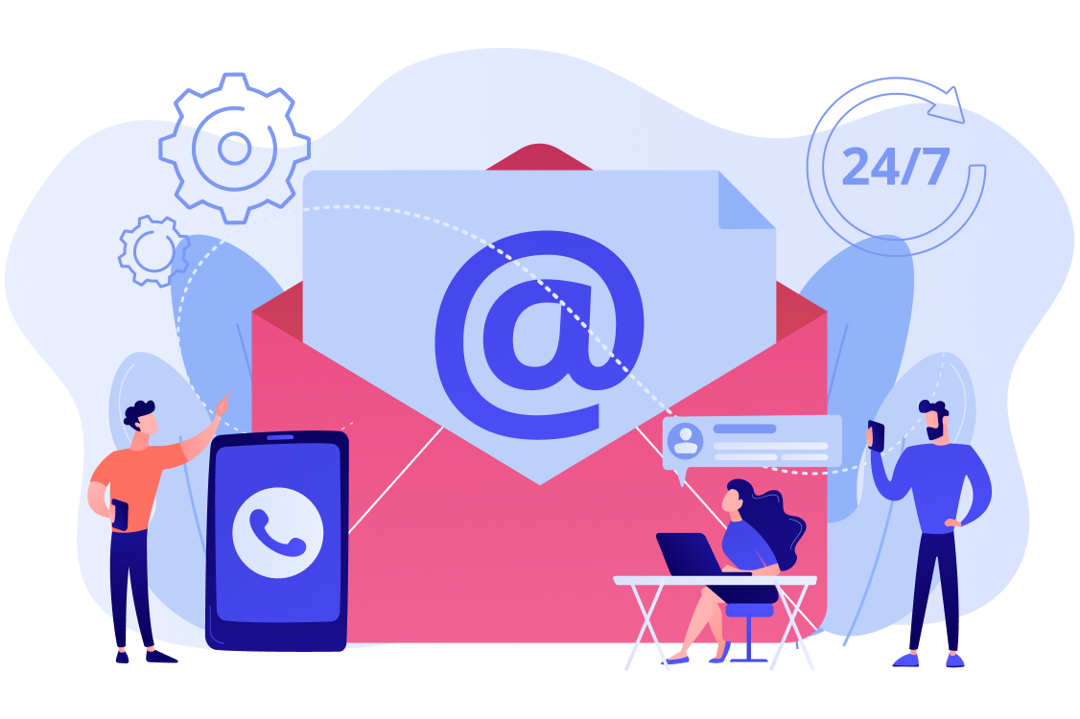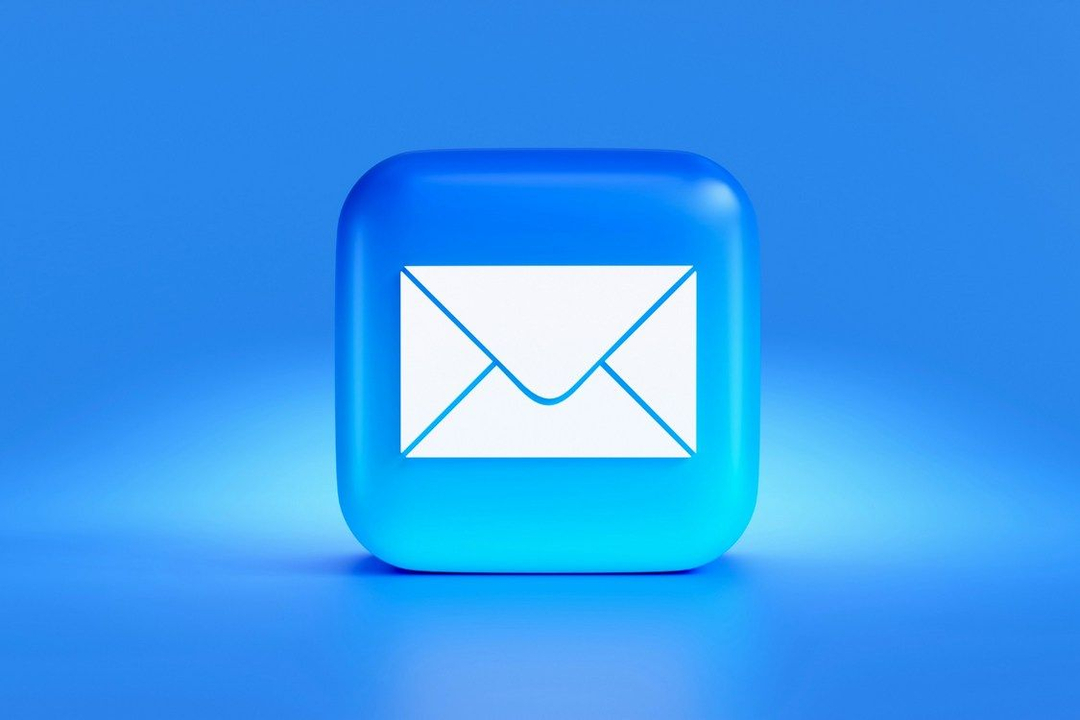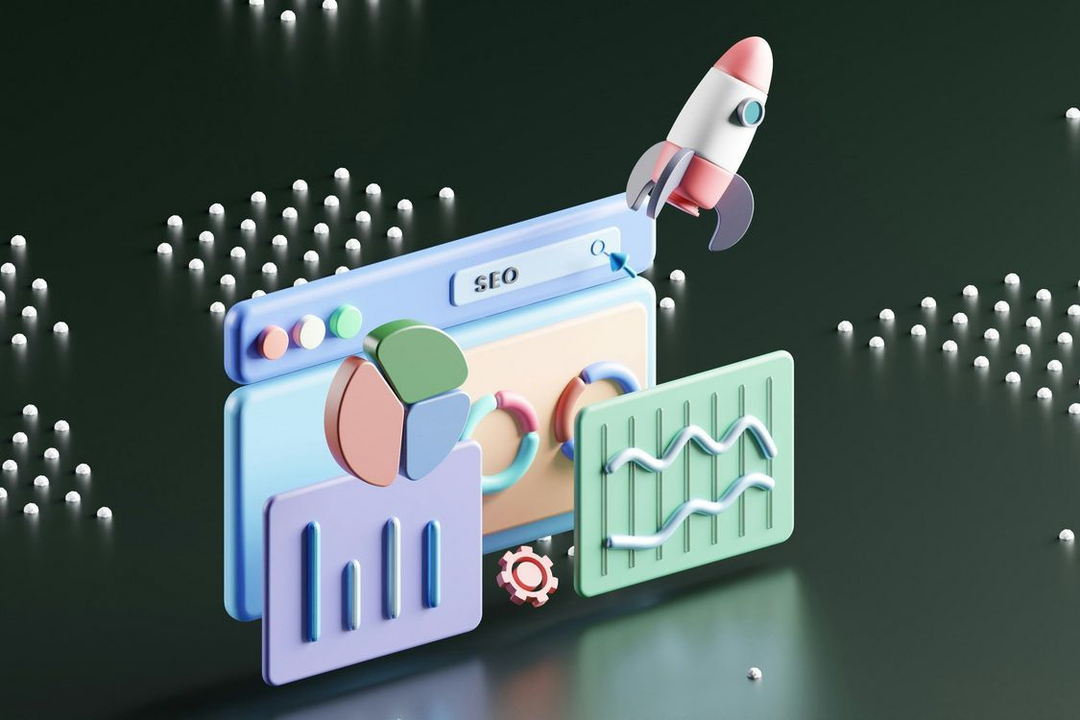Best Cold Email Templates for Real Conversations
by Maildoso's team
05/20/2025
difficulty level ⭐⭐
Cold email success is not just about writing something catchy – it's about using structure, empathy, and timing to connect with real people. The best templates make your message clear, minimize effort for the reader, and provide a path to engage without pressure. Whether you're starting from scratch or improving an existing workflow, the templates below offer frameworks that fit a variety of outreach needs.
Each template focuses on a different goal, from identifying the right contact to warming up cold prospects. We've rewritten and reorganized these based on what really works – simple, conversational emails that get responses without sounding scripted or overly polished.
Contents
- Cold Email Basics That Actually Work
- Built to Send: How Maildoso Handles Cold Email at Scale
- Cold Email Templates That Actually Get Responses
Cold Email Basics That Actually Work
A well-written cold email will fail if it lacks relevance. Success depends on three simple things: the message must be sent to the right person, say something that matters, and offer a reason to respond. The emails that consistently get replies are not the longest or most clever. They are the most intentional.
When cold outreach is ignored, it is usually because one of those core elements is missing. Maybe the contact was random. Maybe the message sounded like it was built for a list. Or maybe it did not offer anything the recipient actually needed. These are not small mistakes. They define whether your email works or goes unseen.
1. Start with Clear Targeting
Strong cold emails begin with understanding who you are writing to and why. If your message could apply to anyone, it will resonate with no one. Effective targeting means thinking beyond a job title or industry. You should know something specific about the company, the role, or the challenge they might be facing.
This does not require deep research. A few simple checks can reveal important signals, such as hiring trends, tool usage, or product launches. Your goal is to speak to one person with one message that clearly makes sense for them. That clarity is what earns attention.
2. Write Like a Human
When an email feels like a sequence, it gets ignored. The fix is not to write longer messages but to write more real ones. Cold emails should sound like they were written by a person, not produced by a tool. One personalized line can set the tone for the entire message.
Mentioning something relevant, such as a specific tool, a department challenge, or a business update, shows that your message was created for this recipient, not for a batch of names in a CRM. That kind of detail creates trust before the email even makes its point.
3. Give a Reason to Respond
Cold emails are often built around what the sender wants. That is why most of them fail. A good email focuses on the recipient and offers something of use. It might be an insight, a link, a new idea, or a short suggestion. What matters is that it delivers a clear reason to keep reading or reply.
You do not need to give away a discount or promise results. You only need to make it clear that there is value in continuing the conversation. That small shift changes the tone completely. Instead of asking for time, you are offering something relevant.
Built to Send: How Maildoso Handles Cold Email at Scale
Cold outreach stops working the moment your emails stop landing in inboxes. That’s exactly the problem we built Maildoso to solve. Our platform was designed for B2B teams that need to send large volumes of cold emails without getting stuck in the technical setup. Instead of having to manually configure every domain and mailbox, we provide a fully prepared system that handles everything - from domain provisioning to inbox readiness. You can see how it all works on our website.
One of the biggest advantages we offer is how we handle deliverability. Unlike basic warm-up tools, our system simulates real user behavior using browser-based agents that actively engage mailboxes. This helps maintain a healthy sender reputation. We combine that activity with IP rotation and custom tracking domains to keep your messages out of spam folders as your outreach grows. And you don’t have to manage it all manually - we’ve built it so that teams don’t have to worry about technical filters and flags.
If you're running multiple mailboxes - whether it’s 10 or 200 - we make it easier to manage. All your replies come into one central dashboard, so there's no need to log in and out of dozens of inboxes. We monitor campaign performance, mailbox status, and domain health in one place. And if you're reviewing budget or scaling plans, you’ll find full breakdowns on our Pricing page.
Beyond the technical side, we at Maildoso also help improve what you're sending. We support our users with deliverability reviews, email content feedback, and compliance checks before campaigns go live. It’s not just about sending more - it’s about making every message count. Whether you're managing a lean outbound setup or a full-scale operation, we offer resources and guidance at every stage.
To stay in the loop on product updates, use cases, or outreach tips, check out our LinkedIn page. It’s where we share updates, answer questions, and connect with teams running similar campaigns. If you care as much about deliverability and inbox performance as you do about subject lines and conversions, Maildoso gives you the infrastructure to send cold emails with confidence.
Cold Email Templates That Actually Get Responses
Not every cold email needs to start with a pitch. Sometimes the most effective message is a simple question, a thoughtful observation, or a reminder that others have already solved the same problem. The templates below cover different outreach situations — from finding the right contact to positioning your solution as timely, relevant, and proven. Each one includes a clear structure, a real-world example, and guidance on when and why it works. Whether you’re just opening a conversation or following up after silence, these frameworks give you tested ways to get replies that lead somewhere.
1. The “Quick Question” Template
This cold email template is designed for situations where you’ve found a company that aligns well with your offer, but you don’t know who the right person to contact is. Instead of wasting time crafting a detailed pitch for someone who might not even be the decision-maker, this approach gets straight to the point: asking who the right contact is. It shows respect for the recipient’s time and role, while keeping the message short and non-intrusive.
Its strength lies in its simplicity. There’s no attempt to sell - just a polite request for information. The recipient doesn’t feel pressured, which is why response rates are often higher. In large organizations where roles are spread across departments, this approach helps you avoid long guessing games and gets you one step closer to the actual stakeholder who matters.
Example:
Good afternoon {first name},
My name is {your name}, and I represent {company}.
Could you let me know who handles decisions in the {sales/customer success/product purchasing} department and how I might best reach them?
Thank you in advance,
{your email signature}
Use when:
- You’re targeting a company with no clear point of contact
- You want to open a conversation before pitching
- You’re exploring unfamiliar organizational structures
What makes it work:
- It’s short and respectful of time
- It doesn’t push a sales message too early
- The recipient can respond or forward it with minimal effort
2. The “Third-Party Path” Template
This template is helpful when you know which company you want to reach and even have an idea of the right department - but direct contact with the decision-maker isn’t working. Instead of repeatedly emailing someone who isn’t responding, you take a side route by reaching out to another employee within the same company. The idea is to use internal communication to your advantage and get your message passed along.
This approach is especially useful when targeting companies with multiple stakeholders or when senior staff are difficult to reach. By contacting someone more accessible — often via LinkedIn or a company directory - and asking for help in a casual, respectful way, you reduce resistance. People often feel inclined to be helpful when asked for guidance rather than pitched. That shift in tone is what gives this template its edge.
Example:
Hi {first name},
I came across your name on {LinkedIn/Twitter/company website} and was wondering if you could point me in the right direction.
I have a solution that could really help {company name} with {pain point or challenge}, but I’ve had trouble connecting with the right person.
Would you happen to know who’s best to speak with about this?
Thanks in advance,
{your email signature}
Use when:
- Your emails to a decision-maker go unanswered
- You want to build internal paths to a prospect
- You’ve identified someone approachable in the company
What makes it work:
- Feels like a request, not a sales pitch
- Encourages internal handoff
- Uses social context to create relevance
3. The “PAS” Template
The PAS formula stands for Problem, Agitate, Solve. It’s a time-tested approach that works by identifying a specific pain point, making the reader feel the weight of that issue, and then offering a practical and easy-to-understand solution. This method is especially effective in B2B sales when the problem is well known and causes friction in day-to-day operations.
This template taps into emotion without losing clarity. By focusing on a real issue the recipient is likely facing, it triggers urgency. The “agitate” part makes the problem feel pressing, while the “solve” section shows your product as a clear path forward. It avoids fluff and instead builds pressure that leads naturally into a solution.
Example:
Hi {first name},
I saw that your company has received some customer feedback about long response times and inconsistent support.
It's frustrating to lose loyal clients due to ticket delays or fragmented communication across platforms.
{Product name} pulls all your customer data into one place, giving your team a single view of each case across every channel.
Would you be open to a quick chat about how we can help improve your response time and customer satisfaction?
{your email signature}
Use when:
- You know the prospect’s pain point
- The issue is visible or common in the industry
- You want to create urgency
What makes it work:
- Personalizes the message with relevant pain
- Creates emotional connection with the reader
- Leads naturally into a solution
4. The “AIDA” Template
This template uses the AIDA structure: Attention, Interest, Desire, and Action. It’s effective because it starts with a strong hook, builds curiosity, supports it with real-world results, and ends with a specific call to action. The AIDA format works especially well for companies that rely on data and success stories to make buying decisions.
Instead of leading with features, you begin with an open-ended question or bold statement. That’s followed by quick proof in the form of stats or client success. Then you move into showing the reader how those results could apply to their situation, finishing with a short and clear next step. It keeps your message organized and easy to follow.
Example:
Hi {first name},
What if your team could reduce client churn by 20 percent in three months?
That’s what we helped {other company} achieve using {product name}, along with a 30 percent boost in response speed and better overall workflow.
If you’re curious how that might translate to your team, I’d be happy to share the details. Would you be open to a 15 minute call this week?
{your email signature}
Use when:
- You have measurable results to share
- The prospect is metrics-focused
- You want a structured and logical format
What makes it work:
- Draws in the reader with a “what if”
- Uses proof to build trust
- Ends with a low-pressure CTA
5. The “Paint a Picture” Template
This template is built around imagination. Instead of talking about features or pain points, it invites the reader to visualize how their current situation could be better with your solution. It’s especially useful when your product has practical, day-to-day benefits that are easier to show than explain.
By contrasting a frustrating everyday scenario with a smoother alternative, this format builds a mental before-and-after. That contrast is powerful because it helps the reader see themselves in both scenes. If the shift feels meaningful and achievable, they’re more likely to reply.
Example:
Hi {first name},
It’s never a good feeling to lose a great candidate just because someone couldn’t find their resume or feedback from the last interview.
Now picture having every detail organized in one clean dashboard that your entire team can access instantly. That’s what {product name} does.
Would you be open to seeing how it works in a 10 minute walkthrough?
{your email signature}
Use when:
- Your product improves workflow or visibility
- You’re targeting operations or HR teams
- You want to tell a simple story
What makes it work:
- Easy to imagine both scenarios
- Shows benefit through contrast
- Focuses on the reader’s world
6. The “Something Useful” Template
Sometimes the best way to start a relationship is to give value first without asking for anything. This template uses that strategy. You do a bit of research, find something your prospect cares about, and share something useful related to it. No pitch, no ask, just relevance and generosity.
This works especially well for people who are hard to sell to directly or who prefer building trust before doing business. It’s also great for long-term nurturing. By showing that you follow their work or interests, you position yourself as thoughtful, not transactional.
Example:
Hi {first name},
I saw your recent post on {platform} about {topic}, and I really liked your point about {detail}.
It reminded me of this article by {author} that dives deeper into a similar challenge - thought it might be useful.
Let me know what you think, and happy to send other resources if you’re interested.
{your email signature}
Use when:
- The prospect is highly relationship-driven
- You want to build long-term rapport
- You're not ready to pitch yet
What makes it work:
- Feels natural and respectful
- Shows real interest in the recipient’s ideas
- Builds familiarity over time
7. The “Straight Value Offer” Template
This is a very direct cold email that works best when you know your product solves a specific and costly problem. It’s not about storytelling or social proof - it’s about hitting a nerve fast and offering a fix. The tone is straightforward, and that’s what makes it effective.
You start with a bold question that frames the problem, follow with a quick result you’ve achieved elsewhere, and close with a soft ask for a quick call. It respects the reader’s time and assumes they want solutions, not small talk.
Example:
Hi {first name},
Is your support process still split across multiple tools and channels?
We recently helped {similar company} cut support costs by 30 percent using {product name} - no onboarding required.
Can we set up a 15 minute call to see if it’s a fit for you too?
{your email signature}
Use when:
- You’re targeting decision-makers with a specific pain
- You want to skip long intros
- Your product has immediate ROI
What makes it work:
- Bold opening grabs attention
- The result is quick and clear
- Low-commitment call to action
8. The “Problem-Solution Pitch” Template
This template is effective when you identify a specific challenge the recipient's company is facing and offer a tailored solution. By demonstrating an understanding of their problem and presenting a clear remedy, you position yourself as a valuable resource rather than just another salesperson.
It's crucial to personalize this email by referencing the company's recent activities or challenges. This shows that you've done your homework and genuinely believe your solution can help.
Example:
Hi {first name},
I've been following {company name}'s recent expansion into new markets. Scaling operations often brings challenges in maintaining consistent customer support.
Our platform, {product name}, helps companies streamline their support systems, ensuring consistent customer experiences across all regions.
Would you be open to a brief call to discuss how we can assist {company name} in this transition?
{your email signature}
Use when:
- The prospect's company is undergoing significant changes or growth.
- You have a solution that directly addresses potential challenges they might face.
- You want to position yourself as a proactive problem-solver.
What makes it work:
- Demonstrates awareness of the company's current situation.
- Offers a specific solution to a likely problem.
- Positions you as a partner in their success.
9. The “Social Proof” Template
This cold email template uses the power of familiarity. People are more likely to trust and respond when they know that others like them - especially peers or competitors - have already succeeded with your solution. Instead of introducing yourself with a pitch, you share a quick reference to recognizable companies that have already achieved real results.
Social proof works especially well in industries where decision-makers are cautious about new tools or services. By seeing that others have used your product successfully, recipients feel more confident about engaging. The key is to mention names and figures that matter to them without overwhelming them with too much detail.
Example:
Hi {first name},
Companies like {similar company 1} and {similar company 2} have improved their sales conversion rates by 25% using our {product/service}.
Given {company name}'s focus on enhancing sales performance, I believe we could help you achieve similar results.
Would you be interested in a quick chat to explore this further?
{your email signature}
Use when:
- You have notable success stories or case studies.
- The recipient is in the same industry or has similar challenges.
- You want to build trust through proven results.
What makes it work:
- Provides tangible evidence of success.
- Reduces skepticism by showing real-world applications.
- Encourages the recipient to envision similar outcomes.
10. The “Industry Trend” Template
This approach works by anchoring your message to a change or movement in the recipient’s industry. Instead of jumping into features, you start by recognizing a shift that’s affecting many businesses. Then, you position your product as a timely response to that shift. This shows that you’re not just selling something - you’re paying attention.
Using trends as a starting point creates relevance. You’re not emailing out of the blue; you’re bringing valuable context to the conversation. It works well when your offer is tied to innovation, digital transformation, compliance changes, or large-scale operational shifts.
Example:
Hi {first name},
The recent shift towards remote work has highlighted the need for robust cybersecurity measures. Many companies are now prioritizing secure remote access solutions.
Our {product/service} has helped organizations like {company name} adapt to this new landscape securely and efficiently.
Would you like to discuss how we can support {company name} in navigating these changes?
{your email signature}
Use when:
- There's a significant trend impacting the recipient's industry.
- Your solution addresses challenges arising from this trend.
- You aim to position yourself as a forward-thinking partner.
What makes it work:
- Shows awareness of industry developments.
- Positions your offering as a timely solution.
- Encourages proactive decision-making.
Conclusion
Cold outreach continues to be one of the most effective ways to start conversations in B2B. But success depends on more than just a clever subject line or a solid template. It takes a structured message, thoughtful timing, and the right tools to make sure your emails not only get noticed but actually get delivered. Whether you’re refining your copy, scaling your sending infrastructure, or managing deliverability at volume, the details matter. Cold email is not guesswork - it’s a process. And the better your process, the better your results.
FAQ
Double your outbound sales with Maildoso!
We provide the infrastructure for cold outreach with the highest possible deliverability. Forget about the spam folder—set up hundreds of mailboxes in just 10 minutes, starting at only $1.80/month!
You might also be interested
Best Cold Email Software for Smarter Outreach
Explore the best cold email software to send smarter campaigns, reach more prospects, and improve your outbound results without hitting spam.
difficulty level: ⭐⭐
How to Choose the Best Cold Email Platform for B2B Outreach
Explore the best cold email platform options for managing domains, mailboxes, and deliverability in B2B outreach.
difficulty level: ⭐⭐
Best Cold Email Outreach Software for B2B Campaigns
A practical guide to the best cold email outreach software for managing campaigns, improving deliverability, and scaling B2B outreach.
difficulty level: ⭐⭐
BacklinkSwappers, inc.
1390 Market Street Suite 200 San Francisco, CA 94102



